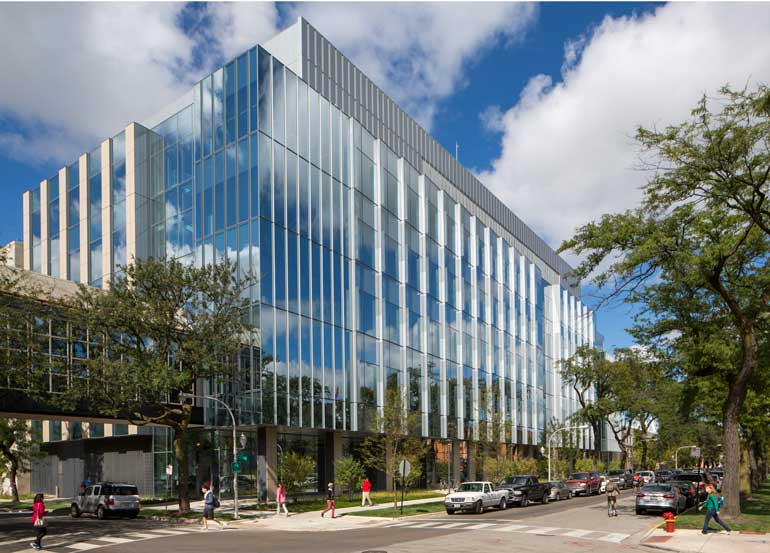This is the first installment of a series on student housing, the second of which will be published April 25.
“College Housing is your home base for UChicago life,” proclaims the University’s College Admissions website. While all undergraduates begin their time at the University in a residence hall, this statement is challenged by the approximately 50 percent of students in the College who live off campus.
This percentage lags behind the number of students living on campus in peer institutions such as Harvard University, with 97 percent, Yale with 87 percent, University of Pennsylvania with 66 percent, and Northwestern with 59 percent. UChicago housing ranges in cost from approximately $7,000 to $9,000 for the academic year depending on the type of room, which is in line with the prices of these peer institutions. Meal plans, mandatory for students living in University housing, range from approximately $4,000 to $5,000 per year, slightly cheaper than those of peer institutions.
The University’s comparatively low percentage of students in housing is a historical occurrence, and concerns about housing undergraduates date back to the University’s founding. The University is currently working to increase the percentage of students in housing with a goal of 70 percent, according to Dean of the College John Boyer.
“The University is committed to creating a community of scholars, and the College houses represent the particular way we foster that community among undergraduates,” Jennifer Luttig-Komrosky, executive director of College Housing and Residential Services, said in an e-mail.
As the housing lottery begins this month, the Maroon investigates on- and off-campus housing, examining pricing, the history of housing trends, and students’ experiences on- and off-campus. This series begins with an examination of the pricing of undergraduate housing as well as the rental market in Hyde Park.
A price comparison
It is difficult to draw clear comparisons between University housing and the rent paid by students in off-campus housing due to the fact that students living off campus pay different amounts for utilities and rent averages vary greatly, but an examination of rents from a variety of Hyde Park landlords points to greater affordability of off-campus housing.
MAC Property Management, which owns 53 apartment buildings in Hyde Park, prices its buildings using a supply-and-demand model based on software called Lease Rent Options, according to Director of Marketing and Leasing Greg Guttman. The software uses approximately 180 factors, such as occupancy, amenities, and interest to determine a price for every apartment every day.
Due to the constant price fluctuations with this program it is difficult to assign averages to MAC apartments, however, one-bedroom apartments tend to range from $1,000 to $1,200; two-bedroom apartments can range from $1,000 to $1,400; three-bedroom apartments can range from $1,500 to $1,900, and four-bedrooms can range from $2,200 to $2,600.
Guttman said this software enables MAC to set fair pricing.
“At the end of the day the renters are setting the price, not us, and if they’re all renting apartments they’re raising the rents collectively; if no one is renting apartments then rents fall. It gives more power to the renter, which is good,” he said.
Other players in the housing market
MAC’s prices are similar to those of Blackstone Management, which rents two-, three-, and four-bedroom apartments. According to manager Marco Soldo, two-bedroom apartments begin at $1,250 per month, three-bedroom apartments begin at $1,720 per month, and four-bedroom apartments begin at $2,010 per month. Hallmark & Johnson Properties, which owns six buildings and rents primarily to students, charges approximately $900 per month for one-bedroom apartments, and approximately $500 to $700 per room for apartments with multiple bedrooms, according to president and owner Jerry Ettinger.
These prices stand similar to, if marginally higher than, pricing by some independent landlords. Tim O’Connell, who owns two buildings south of the Midway, charges between $550 and $625 for furnished, three-bedroom apartments.
Third-year Veronica Heap moved off this summer and lives in a two-bedroom apartment managed by a private landlord. Though she moved largely due to a desire for more independence and frustration with the dining hall, she noted that off-campus living is much cheaper.
“I guess it ends up being two or three hundred dollars cheaper than housing would be [per month],” she said. She also noted this estimate does not factor in the money she saves by not buying a meal plan.
Boyer commented on the need to consider housing costs.
“I think it has to be studied and looked at because if [you have] the best set of opportunities in the world and people can’t afford them they’re not going to seek them out, so the goal has to be realistic,” he said.
The Chicago and national context
Hyde Park’s rental prices stand slightly above the averages for Chicago, according to the Coalition for Equitable Community Development. According to a 2013 study on Affordable Rental Housing, in 2010, 65 percent of housing units in the Hyde Park–South Kenwood community are rental units, with the median rent for the community at $910, $25 more than the median rent in Chicago.
Rent and utilities should take up no more than 30 percent of a household’s income to be classified as affordable. As a recent New York Times study found, rent as a percent of income has risen to 31 percent, up from a historical average of 21 percent. The article cited a Harvard study that nationally half of all renters live in housing that does not qualify as affordable.
In the midst of this rental market, the University is actively working to increase the percentage of students in housing, particularly third-and fourth-years. The history of college housing will be explored in Part II of this series.
The Maroon is committed to understanding all aspects of on- and off-campus housing. If you or someone you know has interesting experiences relating to housing, please contact smanhardt@uchicago.edu.










